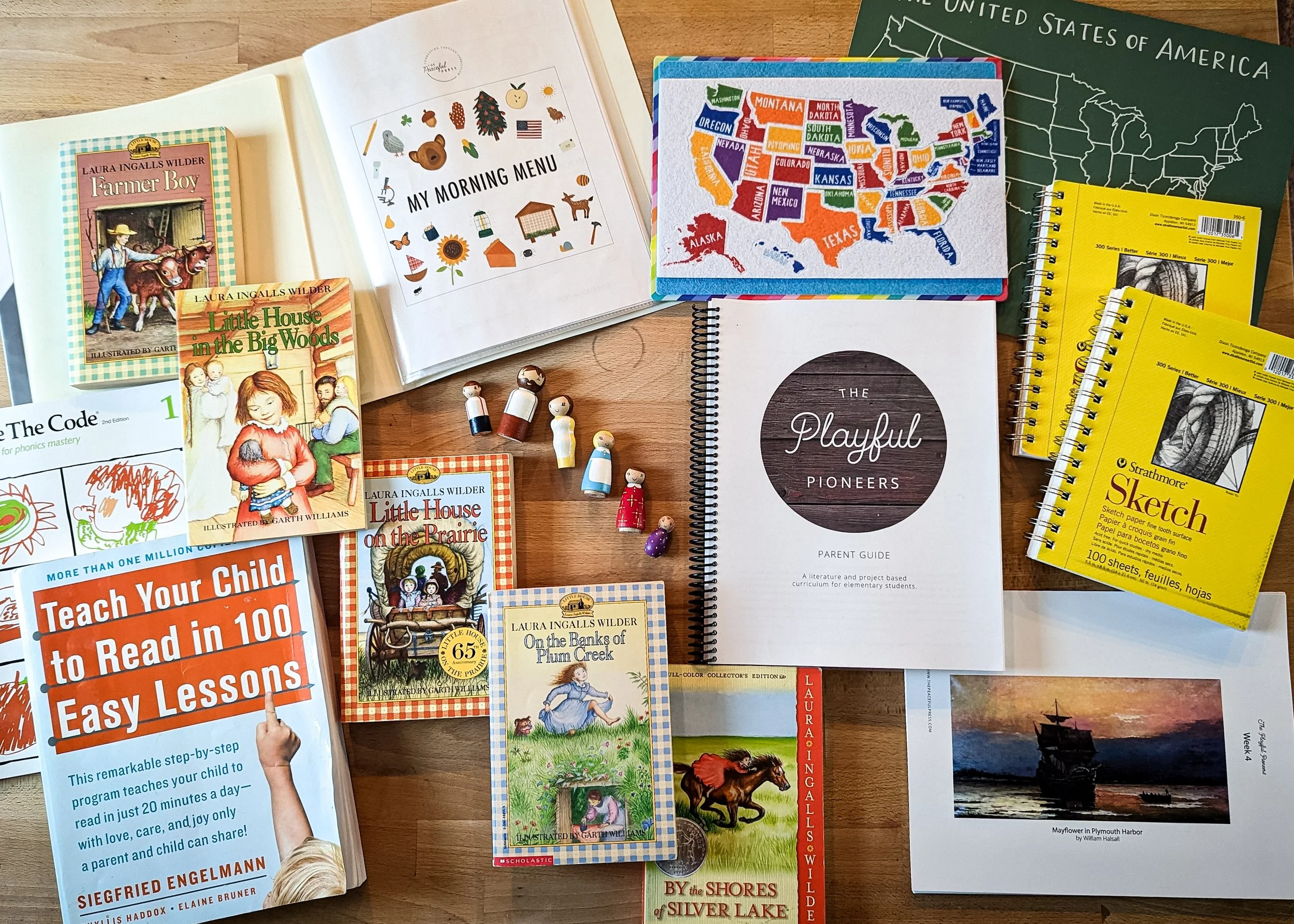Simple Tips for Homeschooling with Multiple Ages
In her book, The Life-Giving Home, Sally Clarkson fleshes out this quote,
“Home is the kingdom in which we have the daily choice and power to make our tiny domain one of light or darkness.”
Many families embrace homeschooling with many ages of students at their school table: toddlers who need extra attention, nurslings, and school-aged learners who also need a parent’s direct instruction.
It could be a recipe for exhaustion and failure. That’s why it’s so important to have a plan.
Begin your mornings with smiles and hugs.
Your homeschool days will have a rhythm. Either a discordant and offbeat one that keeps a frazzled mama guzzling cold coffee or a gentle pace that helps the family and lessons harmonize. Several things come into play that can directly affect this rhythm.
As the mother, your words are paramount. It may sound silly, but making sure to greet every child with a smile, a hug, and a pleasant, “Good morning” will start the day off in a positive direction. I won’t tell you to wake before your kids because I know that each mother has her own needs and schedule. I will say that in my own home, sipping hot coffee and reading my Bible before anyone else is awake helps this mama feel better prepared to face the day’s challenges.
Furthermore, if you have toddlers or preschool aged little people, snuggling with a picture book can be a great beginning to any morning. My boys know where to find a cozy blanket when they pad down the steps. They grab one and a story from our book basket (often curated by mom and filled with picture books from our lessons for the week), and snuggle right in for a story first thing!
Have easy access to snacks.
Every mom knows that snacks are a cure-all. In our home, we have a hanging fruit basket the kids can access any time they like. Often, they help themselves to a banana or apple immediately upon waking. Having some healthy snacks easily accessible is a game-changer with many ages rambling about during lessons.
Also, one way that I have found to get a great head start on lesson time with my older ones is to prepare a special snack tray and beverage just at the beginning of our school day. Simple things like a bowl of nuts, some crackers, muffins, etc. paired with a favorite tea or lemonade can help settle the little ones and keep them entertained for a bit while you attend to the older kids. Many of the recipes found in The Peaceful Press materials make their way onto our snack trays weekly.
Here is one you might enjoy from The Meadow Guide:
Lavender Shortbread
Ingredients
1 1/2 cups butter, softened
2/3 cup white sugar
1/4 cup sifted confectioner’s sugar
2 tablespoons crushed lavender flowers
1 teaspoon grated lemon zest
2 1/2 cups all-purpose flour
1/2 cup cornstarch
1/4 teaspoon salt
Instructions
Cream together butter, sugar, and confectioner’s sugar.
Sift together crushed lavender, lemon zest, flour, cornstarch and salt.
Beat dry ingredients into sugar/butter mixture.
Divide dough into two balls, place each ball between two sheets of parchment paper and flatten into one inch thick sheets of cookie dough
Refrigerate dough for one hour.
Preheat the oven to 325 degrees.
On a lightly floured surface, roll the dough into 1/4 inch thickness.
Cut into shapes with cookie cutters or stamps.
Place on cookie sheets and bake for 12-18 minutes. Cool before eating.
Use activity boxes for toddlers and preschoolers.
Toddlers and preschoolers thrive when they have simple, familiar activities available to them. In our home, this looks like sensory bins of rice or other fun textures in our school area, play dough, and loose parts for play.
Having some dedicated activities and bins that remain put away except during lesson time with your school-aged children will aid your littles in remaining engaged with the items at hand.
You can create 2-4 activity boxes and store them near your lesson area. When you begin your lesson time, get these out and invite the younger crew to quietly engage with their “lessons”. The play that is scooping, sorting, and manipulating various parts and textures is such important work for fine motor skills. Ultimately, these things help your child with penmanship, reading, and logic later on!
Include littles in formal lesson time.
It’s true that much research indicates starting formal lessons during the preschool years isn’t necessary. That said, informal learning is the child’s constant state of being. Since birth, our babies are learning at light speed if we actually consider all they are picking up in such a short period of time. If you have more than one child, you have observed how things you teach an elder brother or sister often trickles down and is “caught” by a younger sibling without any lesson at all (how nice if that were true of algebra, right?).
Similarly, when you study agriculture during the Western expansion period in the US, you will likely find your three-year-old is more familiar with types of corn and covered wagons than before this study. Gathering picture books appropriate for younger ones on the topics in your formal learning can be a great way to keep them feeling included and to encourage family-style learning. Creating this shared experience is one of the secret treasures of homeschool families!
If you need more ideas for how to include multiple children in your homeschool routine, check out the Restoration Home Community. This simple weekly lesson subscription will open again in January 2025 but you can download a free lesson here! We are on a mission to create connected families and restored communities and we are doing it through Restoration Home with educational activities for the littles and connection prompts for older children.











